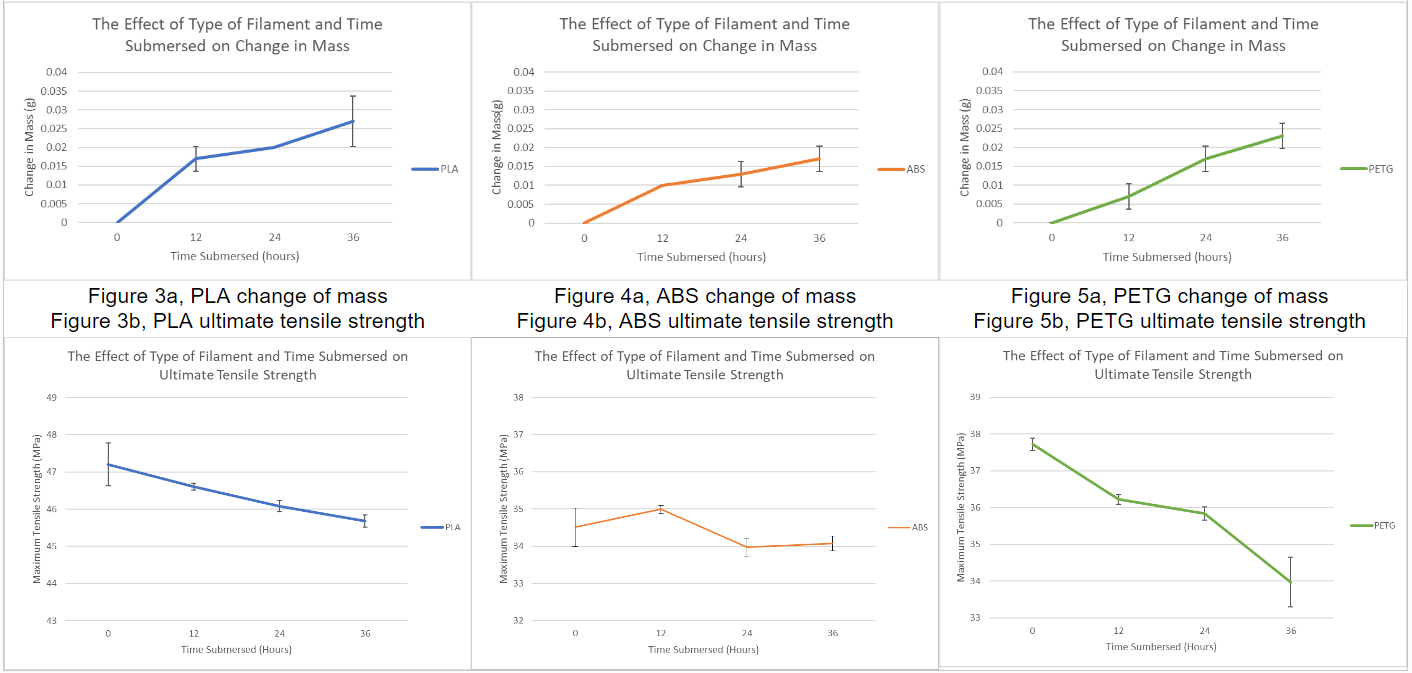This research project was submitted to the Arizona Science and Engineering Fair in 2022. It uses the tensile testing machine. It is shown here:
This study focuses on comparatively analyzing the effect of time submersed in water on various 3D printing materials (PLA, ABS, and PETG) on their mass change and ultimate tensile strength.
Methodology:
Overall Procedures:
- Use the 3D printer to print 12 ASTM D638 Type IV Specimens with each of the PLA, ABS, and PETG filament.
- Label each type of specimen with their material type and number, such that the first PLA sample would be labeled as PLA-1. Place black marks on two ends of the breaking region of the printed specimens on the narrow side of the specimen.
- Weigh each of the specimens and record the data.
- Load each of the specimens and operate the universal tensile testing machine in fast tensile testing mode. Record the data.
- Pour 3 liters of water into each container and place the lid over the boxes. Adjust the water temperature to 23 degrees Celsius.
- Place three specimens of each material type into the containers oriented with the text facing up.
- After 12, 24, and 36 hours, take the specimens out and dry them with a lint-free paper towel.
- Repeat steps 3 and 4 for each of the 12, 24, and 36 hour levels.
3D printer (Ender 3) with ABS specimens:PETG Specimen strain testing:
Specimen Type: ASTM D638 Type IV
Results:
Tables:
Graphs:

Discussion:
This experiment comparatively evaluates the relation between ultimate tensile strength and mass change as a result of different types of plastic submersed in different amounts of time in water.
The hypothesis was partially supported, and the outcomes of this experiment demonstrates that based on the results
- PETG may have experienced more degradation compared to PLA, but it may be less hygroscopic.
- PLA may have experienced less degradation compared to PETG, but it may be more hygroscopic despite the lower degradation.
- ABS, as predicted, had most likely experienced the least degradation and is the least hygroscopic.
 Xieshi Zhang
Xieshi Zhang
Discussions
Become a Hackaday.io Member
Create an account to leave a comment. Already have an account? Log In.